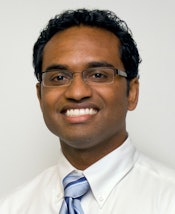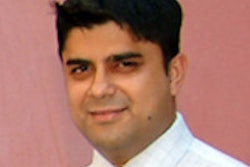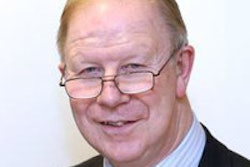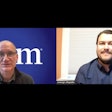
Radiology residents aren't imagining the shortage of radiology jobs; on the contrary, the mismatch between available jobs and job seekers appears to be real and persistent, at least on the American College of Radiology (ACR) job board, according to a just-published report in the Journal of the American College of Radiology.
In a study that analyzed the number of radiologist jobs available versus the number of job seekers between October 2010 and June 2013, researchers from Boston found that the supply of applicants consistently exceeded demand by more than 80 jobs a month. The number of new applicants tended to ease in the winter and spring months and peak in late summer and fall, the study team wrote (JACR, January 13, 2014).
"There were more new seekers than new job postings throughout the study period, so this suggests that the market is competitive," said lead author Dr. Anand Prabhakar in an interview with AuntMinnie.com. "We were also able to show that there was a constant supply of new job postings throughout the year."
 Dr. Anand Prabhakar from Massachusetts General Hospital.
Dr. Anand Prabhakar from Massachusetts General Hospital."I think this is very significant because people get very discouraged around the fall and wintertime -- especially fellows who are looking this year," he said. "But it's encouraging that there will always be jobs available, and if someone doesn't find a job immediately they can be somewhat reassured that they will find a new job."
Prabhakar is an assistant radiologist at Massachusetts General Hospital and an instructor at Harvard Medical School.
Analysis based on job board activity
The study sought to evaluate the radiology job market as represented by the jobs posted in the ACR Career Center for the period from October 2010 to June 2013. The data included the number of monthly new job seekers, new job postings, and clicks on each job posting. The information was used to calculate a monthly competitive index defined as the ratio of new job seekers to new job postings.
"The ACR data collected only reflects the number of people who sign up for a new account; the assumption is that is someone who is newly looking for a job," he said.
When looking for a radiology job, applicants have a number of choices, including printed job postings, which have declined in recent years, as well as electronic postings from organizations such as ACR, RSNA, the American Roentgen Ray Society, and the Society of Interventional Radiology, the authors wrote. Other jobs are available through personal connections and word of mouth.
But the ACR job board has emerged as an important player in the job market, allowing job seekers to search by keyword and location, post resumes, and establish accounts that send out job alerts when a matching position is posted.
The number of new resumes uploaded and the number of new employers were also included for reference, but they were not analyzed in the month-to-month data, the group explained. Statistical analysis was used to compare new job seekers to new job postings and new job clicks over the 33-month study period.
Major findings were as follows:
- The mean number of monthly new job postings was 84.9 ± 10.1 in 2011 and 86.5 ± 15.2 in 2012, ranging from a low of 62 jobs in December 2010 to a high of 117 in September 2012.
- The mean number of newly registered job seekers was 176 ± 107 in 2011 and 136 ± 57 in 2012, ranging from a low of 80 in May 2012 to a high of 418 in October 2010.
- For each month of the study, new job seekers exceeded new job postings by almost half. Over the study period, the average number of newly registered job seekers was 168 ± 96 -- significantly higher than the number of new job postings (84 ± 13) during that time period (p = 0.0002).
- Job competitiveness -- i.e., new applicants versus new positions -- was pegged at 1.99 ± 1.0 in 2011 and 1.56 ± 0.5 in 2012. It ranged from a low of 0.95 in May 2011 and April 2012 to a high of 5.1 in October 2010.
"There was no significant difference in the competitive index between 2011 and 2012," the authors wrote. "There was, however, recurring seasonal variability in the competitive index, with higher values in the fall of 2010 and 2011 and lower values in the winter and spring of 2011 and 2012."
As for activity in the ACR Career Center, the total number of clicks on postings skyrocketed from 69,046 ± 15,181 in 2011 to 153,558 ± 80,624 in 2012, a statistically significant change (p < 0.004). Clicks were fairly constant from October 2010 through April 2012 but then increased rapidly, peaking in January 2013 at 290,472 per month, the study team wrote.
"It's really taken off in the past year; to me that sort of suggests that this has emerged as a dominant place where job seekers are looking for jobs online," Prabhakar said.
The data also indicate that the supply of jobs hasn't really changed between 2011 and 2013, "but on the job board the number of new applications waxes and wanes," Prabhakar said. "So although there are other sources where people could get jobs, it suggests that there is a less competitive time for new applicants versus other new applicants."
According to the study results, that less competitive time would be winter and spring versus late summer and fall. He cautioned, though, that the data are imperfect because an applicant with an existing account who came back to use the service with the same account wouldn't be classified as a new job seeker.
Another limitation is that simply browsing the boards doesn't require setting up an account. And in addition to fourth-year residents, prospective radiologists, medical students, or residents in early training can browse the board, as can unregistered job users, potentially skewing the data to a degree that can't be known with current methods. The study method did not determine if newly posted jobs were truly new or simply reposted. Even though it was assumed that all job seekers were new graduates, that might not have been the case.
Finally, filling jobs by word of mouth may be an important way of recruiting and may actually conflict with data in the job boards. A traditional survey could be used to track this information, the authors wrote. Expanding the range of data collected by ACR might better enable researchers to guide and shape the radiology job market in the coming years.
How would you do it?
But just for argument's sake, if one had sought employment unsuccessfully during a peak fall period, would it be a valid strategy to come back in the winter and early spring to try again when the competitive index was lower?
"That would be my strategy," Prabhakar said. "I'm not recommending it, but it's nice to know that there were new jobs being posted constantly during the study period."
Overall, there were nearly two new job seekers for every posting, suggesting that the market remained competitive throughout the study period for the part of the job market captured by the board.
"This is in contrast to the commonly shared belief among fellows that the job market is richest during the fall and drops off thereafter," the study authors wrote. "In fact, on the basis of the calculated competitive index values, the fall may actually be the worst time to find a job."
Regardless of timing, finding a radiology job is arguably one of the most daunting tasks new trainees face. But there is reason to be hopeful -- and even optimistic, Prabhakar said.
"I think we're pretty lucky as physicians," he said, at least compared with a lot of other industries where "many with graduate degrees can't get a job. But I think applicants need to be open-minded and flexible, and I think geographic flexibility can really help."
"I try to encourage our residents and fellows here at Mass General to be flexible and try to demonstrate what values they can add to a practice," he said. "I think if they do these things, they'll be better off than just applying and expecting the job to work for them."



















